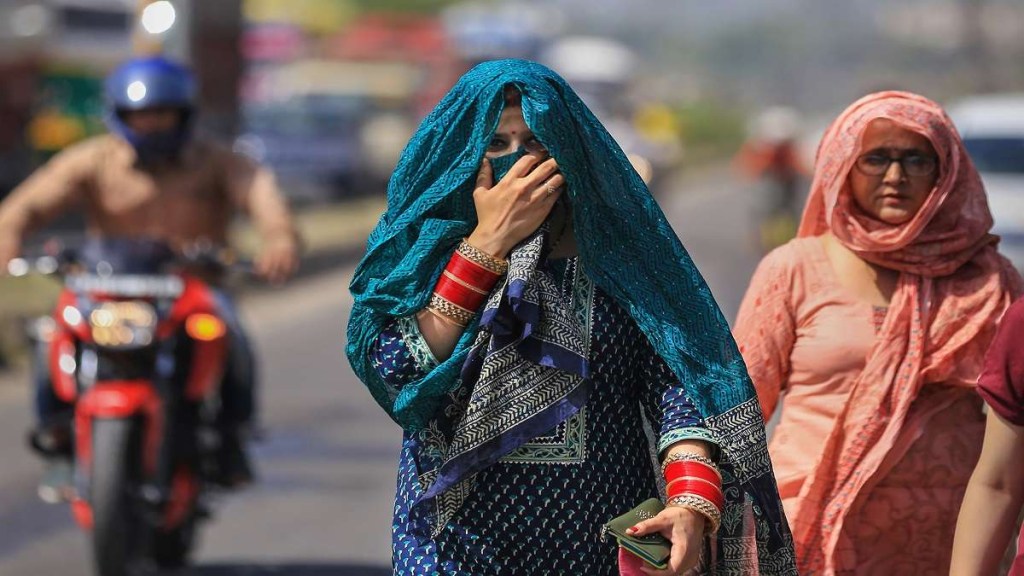The northern states of India continue to struggle with sweltering heatwaves killing more than 50 people and landslides in the northeast that have affected lakhs of people. Experts have called the current weather “alarming though not surprising.”
Vimal Mishra, Vikram Sarabhai Chair Professor, Civil Engineering and Earth Sciences, IIT Gandhinagar, told PTI, “This could be the worst summer in the last 120 years, at least for north India. Never have temperatures gone so high — more than 45-47 degrees Celsius — for such a vast region, which is also densely populated. This is a record in itself.”
Explaining the phenomenon, earth system scientist Raghu Murtugudde, a professor at IIT-Bombay, said that the recent heat surge is due to the combined effects of climate change, El Nino, and the water vapour released by the Hunga Tonga volcanic eruption in January 2022. El Nino causes sea surface temperatures to warm, impacting global weather patterns.
Murtugudde noted, “The Middle East is heating up rapidly because the desert traps heat during global warming. A warmer atmosphere is more humid, and water vapor is a greenhouse gas.” This warming shifts winds over the Arabian Sea northward during summer and the monsoon, causing the sea to warm quickly and bring more humid air to Delhi, increasing the heat index.
“Exacerbating this situation is Delhi’s urban heat island effect,” Murtugudde added. This effect, caused by concrete and asphalt surfaces that store heat during the day and release it at night, prevents the heat from escaping, thereby amplifying nighttime temperatures and worsening the heat.
The country experienced extreme temperatures and unusual weather patterns recently. Safdarjung Observatory confirmed a 79-year high of 46.8 degrees Celsius. Haryana’s Rohtak and Uttar Pradesh’s Prayagraj hit all-time May highs of 48.8 degrees Celsius, breaking previous records. Una in Himachal Pradesh logged a 19-year high of 46 degrees Celsius.
The same week, Cyclone Remal triggered flash floods in Assam and Manipur and landslides in Mizoram and Meghalaya, affecting at least 600,000 people. Scientist Raghu Murtugudde explained that Remal lingered on land due to Bay of Bengal’s heat and wet pre-monsoon conditions, intensifying rainfall. He noted that the north’s heatwaves and northeast’s floods align with monsoon patterns and climate change impacts.
March saw sharply rising temperatures, with Delhi experiencing mid-to-late 20s Celsius. US-based Climate Central found that climate change is shrinking India’s spring season, causing winters to rapidly transition to summer. Northern regions are seeing disappearing spring seasons, with states like Rajasthan and Andhra Pradesh facing over 40 degrees Celsius temperatures in late March, a rarity in the 1970s.
April continued the trend, with parts of Rajasthan and Goa recording above-normal temperatures. Mumbai hit 39.7 degrees Celsius on April 17, its warmest April day in 14 years. By April 21, heatwaves spread across multiple states, including Uttar Pradesh, Madhya Pradesh, Odisha, and Andhra Pradesh, with temperatures ranging from 40-46 degrees Celsius.
The heatwave, affecting billions in South and Southeast Asia, was made 45 times more likely and 0.85 degrees Celsius hotter by climate change, according to the World Weather Attribution group. The European Union’s Copernicus Climate Change Service (C3S) reported April as the warmest on record, the 11th consecutive month of record global temperatures.
The World Meteorological Organization (WMO) attributed record temperatures to El Nino and human-induced climate change, noting the current El Nino as one of the strongest. Climate scientists warn of the impact of El Nino years and predict a cooling effect with the upcoming monsoon and La Niña, but not immediately. Scientist Mishra expects dry heat to persist into June, with intermittent relief if a weak monsoon prevails over north India.
(With PTI inputs)

